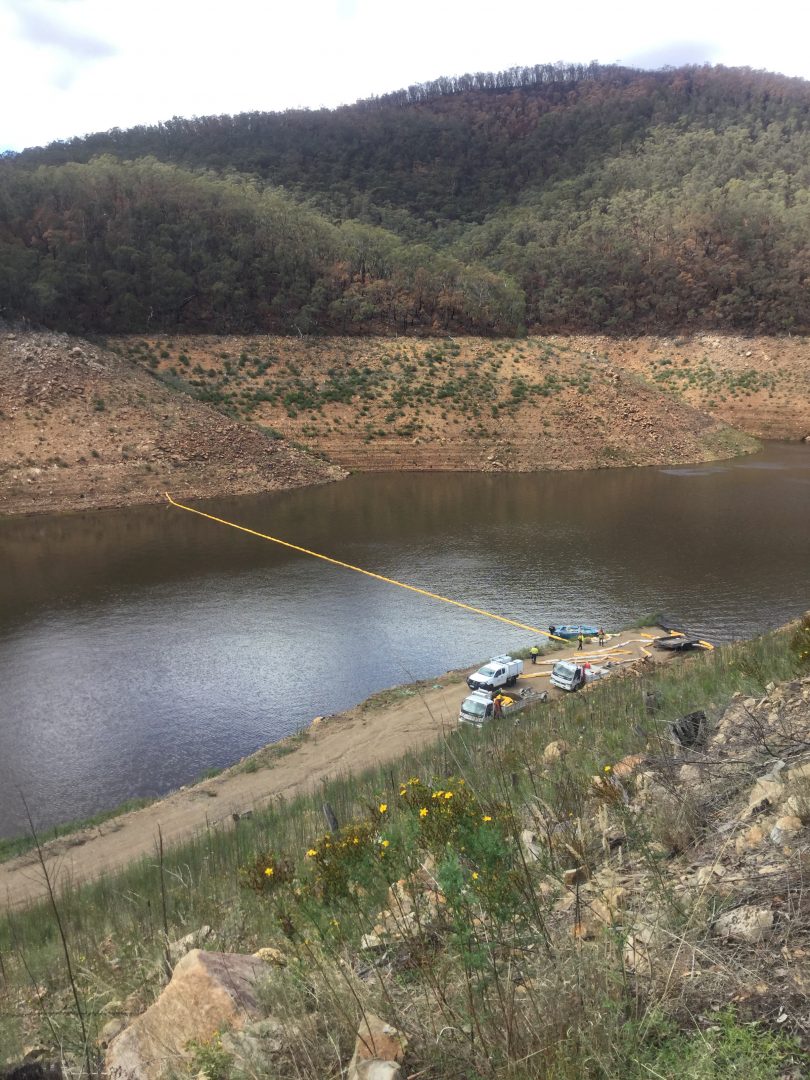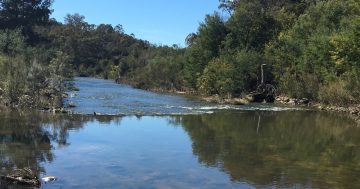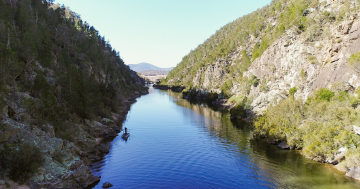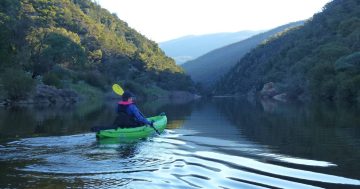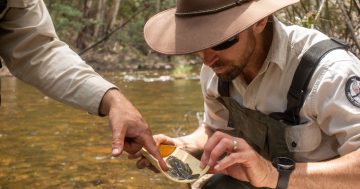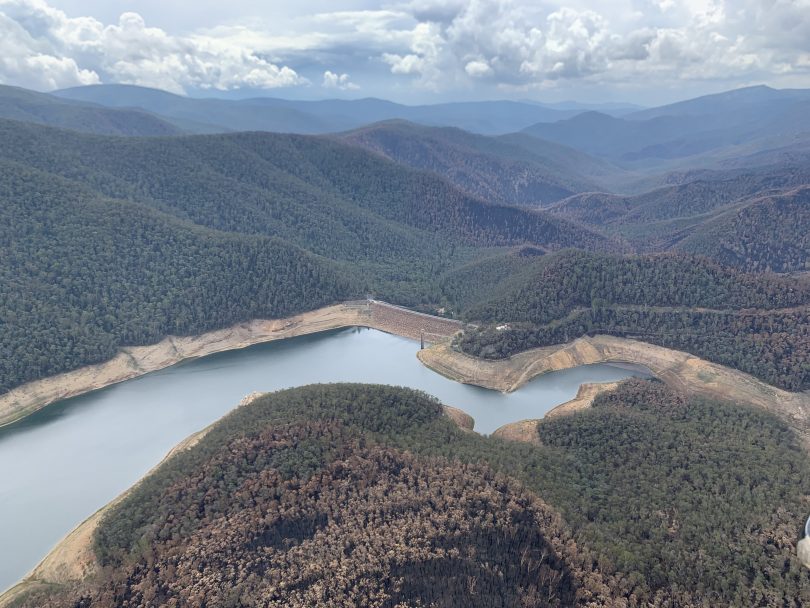
Corin Dam after the bushfires. Photo: Supplied.
Through bushfires, droughts and floods, Icon Water must ensure Canberra’s water supply is maintained to its usual high quality. Icon Water Manager Sustainability and Environment, Ben Bryant says preparation is key.
“We provide over 100 million litres of water each day to Canberra and Queanbeyan residents and we work year-round to ensure everyone’s water is to the high quality they expect,” Mr Bryant said.
While bushfires are a challenge, Mr Bryant says Icon Water has learned a lot from previous bushfires in the region.
“In 2003, we did have water quality issues but we have made continuous improvements since then to protect Canberra’s water quality.”
Preparation, planning and work start way back up at the catchment and continue down through the entire system.
The ACT draws its water supply from three separate catchment systems: Cotter, Queanbeyan and the Murrumbidgee. The primary catchment is the Cotter River Catchment drawing from the upper reaches of the Cotter River in the Namadgi National Park.
The Cotter River Catchment is well protected, with no farms or houses in the area and restrictions on recreation activities within the catchment helping protect the quality of the water. There are three dams on the Cotter River: Corin, Bendora and Cotter, which was enlarged in 2013.
The Queanbeyan River Catchment is a rural catchment which includes farmlands and small communities and the water quality from this catchment can be variable so additional treatment is needed to meet drinking water quality requirements. The Googong Dam is located on the Queanbeyan River.
The use of water from the Murrumbidgee River commenced in 2007 to supplement water from the ACT’s then-depleted water storages.
Typically, most of the ACT’s water is drawn from the Bendora Dam with water from Googong Dam being drawn on during times of high demand during summer or extensive dry periods. In periods of low water supply, additional water can be drawn from the Cotter Dam and the Murrumbidgee River.
The quality of the water within the Cotter River catchment was impacted following the 2003 bushfires. A loss of vegetation caused by the fires was followed by a large rainfall event that increased the amount of dirt and sediment entering the water, meaning the quality of water running off the catchment was more variable. Since then, Mr Bryant says significant remediation works have been undertaken in the lower catchment to minimise these impacts.
This year, the fires in and around Namadgi impacted the upper Cotter catchment, at one stage breaching containment lines around the Corin Dam. Icon Water was able to continue to utilise both Cotter and Googong dams to maintain water supply.
Mr Bryant says ash, debris and managing sediment are the main threats to water quality. “Fortunately, it is not all black sticks up there. It is not fully burned, and the rain is helping regreen which then helps the landscape naturally filter ash and debris.”
Water that is not absorbed and runs off is gathered into temporary pools built using coir logs. Bryant explained the 1.2 metre long coir logs are used as mini retaining walls that dam the water into small pools. The sediment sinks to the bottom and the water is filtered as it passes through the coir.
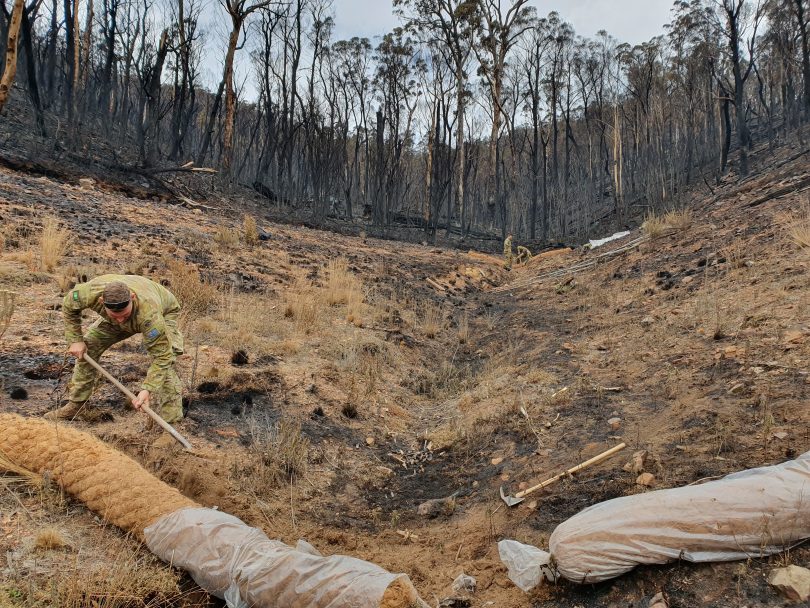
The ADF assisted with the installation of coir logs to help reducing ash and sediment run off when it rains. Photo: Supplied.
The next step is to set up silt curtains booms in the dams.
The booms sit on the surface with a one-metre silt curtain below the surface to hold back the water and let natural processes take over so sediment settles onto the floor of the dam. There are currently three booms in both Corin Dam and Bendoora Dam. Icon Water has also heavily invested in upgrading filter systems to deal with ash at both the Stomlo and Googong water treatment plants.
Out of bushfire season, Mr Bryant says crews spend time preparing infrastructure to prevent fire taking hold.
“Our crews assess the vegetation around pumping stations, pipelines and tanks. Ignition of long grass around assets was an issue in 2003, so we ensure everything is cut back. Our preparation includes clearing leaf litter and cutting back shrubs under eaves.
“All our planning and preparation meant that we were able to maintain the supply of quality water to the Canberra and Queanbeyan communities. We continuously monitor our water supply from the water through to the treatment plants and throughout the network. Icon Water will continue to undertake extensive testing to ensure water quality meets both environmental and source water criteria,” he said.
